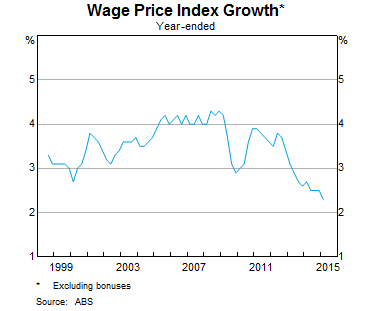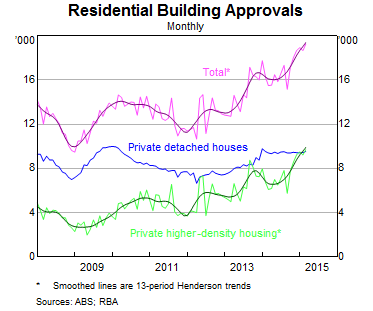RBA says we are cautious consumers despite record lows
Australia's low interest rates were helping to boost household consumption, but the RBA says the consumption uptake was probably slower than it was in the past.
"This is because high debt levels mean that households are less inclined than they once were to respond to low interest rates by borrowing to increase their spending," the RBA deputy governor Philip Lowe said.
"Notwithstanding this, there is still a spending response to low interest rates and household consumption rose by nearly 3% in 2014.
This is slower growth than in the period from the mid 1990s to the mid 2000s, but it is faster than current growth in real household income," he said in a speech titled, Managing Two Transitions, Philip Lowe at the Corporate Finance Forum yesterday.
"However, as I have spoken about previously, the overall effect on consumption is probably smaller, or at least slower, than it was in the past.
"This is because high debt levels mean that households are less inclined than they once were to respond to low interest rates by borrowing to increase their spending.
"Notwithstanding this, there is still a spending response to low interest rates and household consumption rose by nearly 3 per cent in 2014.
"This is slower growth than in the period from the mid 1990s to the mid 2000s, but it is faster than current growth in real household income.
His speech was on two transitions - the first in the Australian economy following a period of extraordinarily strong growth in investment in the resources sector combined with record high commodity prices.
"The second is a much more international one – and that is what seems to be a transition to a world in which global interest rates are lower, at least for an extended period, than we had previously become used to."
The effects of local low interest rates were "perhaps clearest in residential construction" which increased by 8 per cent in 2014.
"And with building approvals continuing at very high levels over recent months, particularly for apartments, we can look forward to further increases in construction activity over the months ahead (Graph 6).
Graph 6
While the transition that is taking place was not exactly seamless, the transition was being assisted by three developments: the lower exchange rate; restraint in aggregate wage growth; and the stimulatory setting of monetary policy, he noted.
Graph 5

He said the part of the transition that is taking place more slowly than the RBA had earlier expected was the lift in business investment outside the resources sector.

